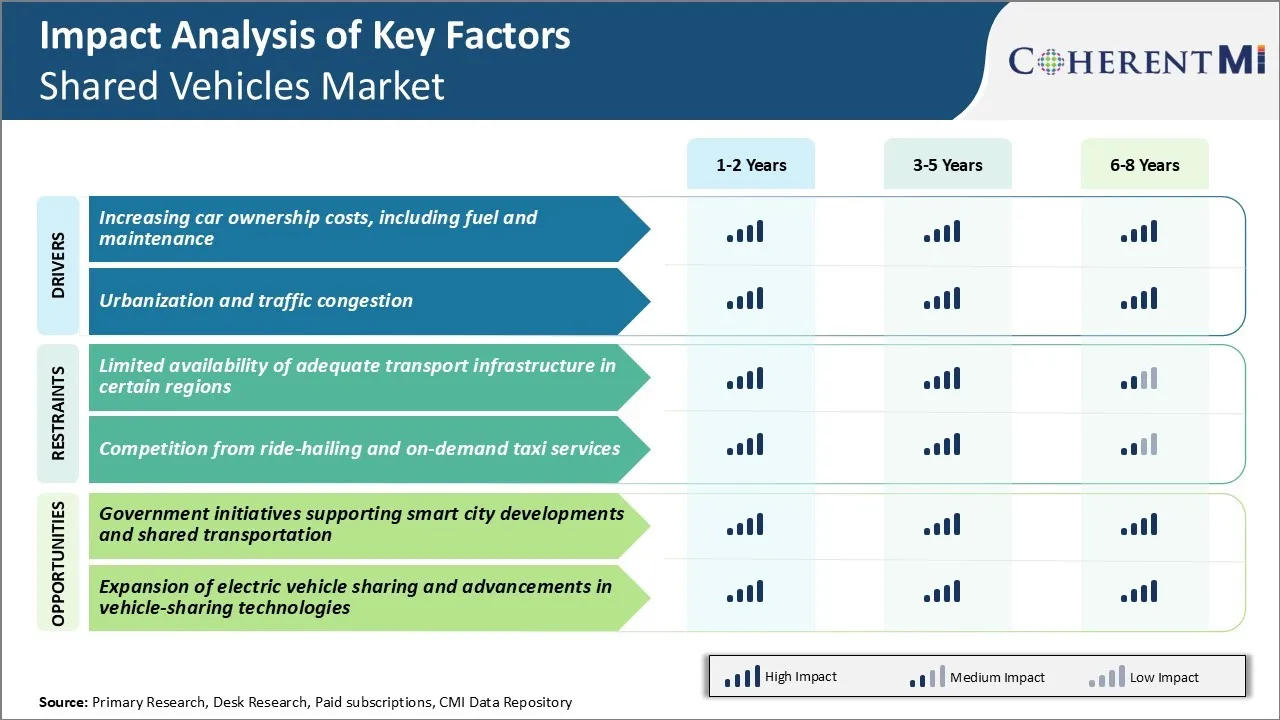Shared Vehicles Market Trends
Market Driver - Increasing Car Ownership Costs, Including Fuel and Maintenance
The cost of car ownership has been steadily rising over the past decade. Shared vehicles provide one such alternative. By enabling easy access to vehicles without the long-term commitment of ownership, users can avoid taking on large repair bills or dealing with rising fuel costs. Individual trips that may not otherwise be feasible or affordable can be completed via a cost-effective shared option.
For families in particular, the ability to share one vehicle among household members and only pay for actual time of use can significantly reduce annual car-related spending and free up disposable income for other priorities.
Shared mobility space will continue expanding its customer base as economically-minded consumers increasingly view individual car purchases as an unnecessary burden. With new digital platforms constantly improving user experience and expanding service coverage areas, these models are poised to fulfill transportation needs. Need for keeping ownership costs in check for a growing segment of the population will continue to grow shared vehicles market.
Market Driver - Urbanization and Congestion
Rapid urbanization trends have led to population density levels not seen before in major cities worldwide. As more people flock to urban centers for employment and lifestyle opportunities, municipal infrastructure struggles to keep pace. A direct result is worsening road congestion that reduces mobility and drags down productivity.
By enabling higher vehicle occupancy and optimizing utilization of each vehicle on the road, services like ride-hailing take commuters off crowded trains and buses as well as reducing the number of single-occupant vehicles contributing to congestion. Studies have shown ride-sharing, bike rentals, and carpooling access near transit hubs can lower dependency on personal cars for short inner-city trips.
With digitally optimized fleets and dynamic pricing, shared vehicles also redistribute traffic more evenly throughout the day instead of everyone trying to use their own car simultaneously during rush hour. For dense and fast-growing cities, implementing shared mobility at scale provides a way to both sustain high economic activity levels while keeping roads fluid for the movement of people and goods.

Market Challenge - Limited Availability of Adequate Transport Infrastructure in Certain Regions
One of the key challenges faced by the shared vehicles market is the limited availability of adequate transport infrastructure in certain regions across the world. While major cities in developed markets have fairly well-established roads, public transport systems and supporting infrastructure, the same cannot be said for several developing and underdeveloped areas.
The lack of proper roads, limited road connectivity between locations, absence of dedicated lanes for shared mobility and insufficient parking infrastructure in many smaller cities and towns pose significant hurdles for companies and operators active in this market. Setting up a robust shared mobility network requires reliable infrastructure that can facilitate easy navigation as well as efficient pick-up and drop-off of users.
Infrastructure inadequacies can negatively impact the last mile connectivity and user experience, limiting the scope for market expansion beyond major metropolitan areas. Overcoming these infrastructure roadblocks would require substantial time and capital investments from local administrations.
Market Opportunity - Government Initiatives Supporting Smart City Developments and Shared Transportation
One of the prominent opportunities for the shared vehicles market is the rising focus of many governments on smart city developments and initiatives promoting shared transportation systems. In a bid to alleviate traffic congestion levels, several administrations are pushing smart and sustainable mobility solutions. They are formulating enabling policies, introducing regulations and offering incentives to bring shared mobility models to the forefront.
Global trends indicate a definite shift towards integrated multimodal public transport networks with seamless connectivity provided by on-demand shared mobility services. More and more cities are embracing smart city blueprints to emphasize walkability, connected infrastructure, and shared vehicle alternatives.
This will open the doors for Next Generation Mobility companies to expand their footprint and customized offerings. Supportive regulations and investments in digital technologies by governments are facilitating the shared vehicles market growth across global regions.